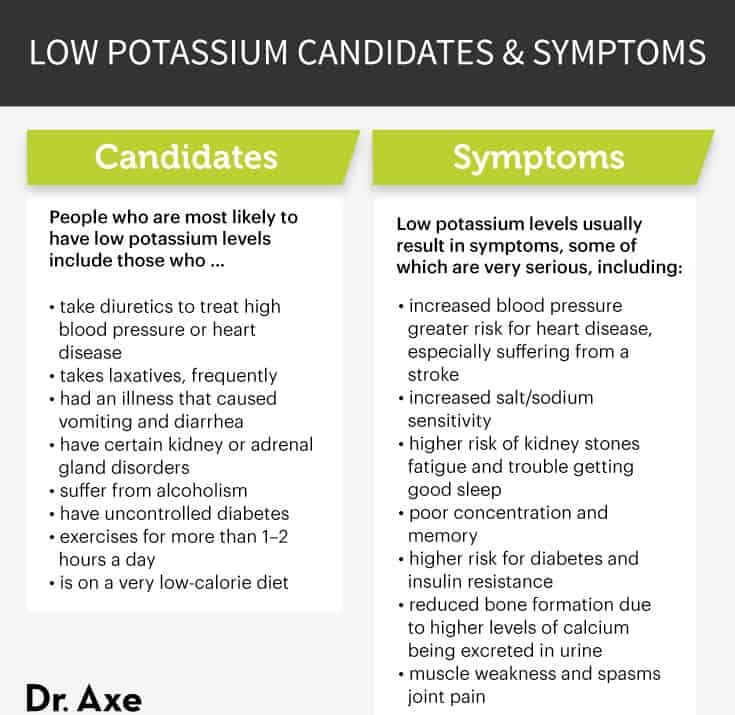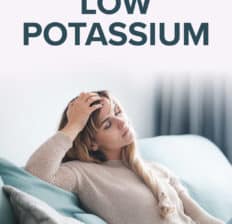This Dr. Axe content is medically reviewed or fact checked to ensure factually accurate information.
With strict editorial sourcing guidelines, we only link to academic research institutions, reputable media sites and, when research is available, medically peer-reviewed studies. Note that the numbers in parentheses (1, 2, etc.) are clickable links to these studies.
The information in our articles is NOT intended to replace a one-on-one relationship with a qualified health care professional and is not intended as medical advice.
This article is based on scientific evidence, written by experts and fact checked by our trained editorial staff. Note that the numbers in parentheses (1, 2, etc.) are clickable links to medically peer-reviewed studies.
Our team includes licensed nutritionists and dietitians, certified health education specialists, as well as certified strength and conditioning specialists, personal trainers and corrective exercise specialists. Our team aims to be not only thorough with its research, but also objective and unbiased.
The information in our articles is NOT intended to replace a one-on-one relationship with a qualified health care professional and is not intended as medical advice.
You Probably Have Low Potassium — Start Eating These 15 Foods
April 28, 2023

Potassium is an important electrolyte and the third most abundant mineral in the body. It is the main compound that interacts with sodium to perform a number of important functions every single day, especially balancing fluids and mineral levels within the body. That’s why having low potassium levels can be so dangerous.
Potassium is found within all cells of the body, and its levels are controlled by the kidneys. It’s needed for numerous cellular functions, including regulating heartbeat rhythms and nerve impulses, allowing muscles to contract, preventing muscle aches, supporting digestive health, and boosting energy levels.
What Are the Risks of Low Potassium?
Unfortunately, many children and adults in the U.S. and other developed nations suffer from low potassium. It’s one of the most common nutrient deficiencies in women and men alike.
In fact, the U.S. Department of Agriculture (USDA) estimates that dietary intake of potassium by all groups in the U.S. is lower than the daily recommended amount.
Luckily, it’s possible to prevent low potassium levels and increase your intake naturally from potassium-rich foods. Many foods contain potassium — in fact, almost all meat, fish and unpasteurized, high-quality dairy products provide a high amount of potassium, as do many vegetables, beans and fruits.
People who are most likely to have low potassium levels include:
- Those who take diuretics in order to treat high blood pressure or heart disease
- Anyone who frequently takes laxatives
- Anyone who has recently had an illness that caused vomiting and diarrhea
- Those with certain kidney or adrenal gland disorders
- Alcoholics
- People with uncontrolled diabetes
- Athletes who exercise for more than one to two hours a day
- Anyone on a very low-calorie diet
Moderately low levels of potassium are very common in the general population and usually result in symptoms, including:
- increased blood pressure
- greater risk for heart disease, especially suffering from a stroke
- increased salt/sodium sensitivity
- higher risk of kidney stones
- fatigue and trouble getting good sleep
- poor concentration and memory
- higher risk for diabetes and insulin resistance
- reduced bone formation due to higher levels of calcium being excreted in urine
- muscle weakness and spasms
- joint pain
Very low potassium levels can result in severe potassium deficiency characterized by a condition called hypokalemia. Symptoms of hypokalemia are serious, sometimes evenly deadly, and include cardiac arrhythmias, muscle weakness and glucose intolerance.
Usually hypokalemia is caused by factors other than not eating enough food rich in potassium, such as complications due to kidney function, diuretic use, or being very sick and losing fluids.
One of the biggest problems with having a low potassium intake is that the body isn’t able to neutralize acids as well. Non-carbonic acids are generated during digestion and metabolism of both plant and animal proteins, including meats, dairy and grains. It’s potassium’s job to balance these acids in order to keep the body at a proper pH, as low potassium can mean the body becomes too acidic.
Fruits and vegetables have built-in acid-neutralizers, but meats, most grains and other animal foods do not. Because the standard American diet is high in both animal proteins and grains and low in fruits and vegetables, most people build up a high amount of acid in the blood.
The result? Poor digestion, impaired cognitive abilities, frequently feeling tired, lower immunity, poorer heart health and many other potential risks.
Recommended Daily Intake of Potassium
As of 2019, an expert committee with the National Academies of Sciences, Engineering, and Medicine established updated recommendations for potassium consumption, which can vary based on age and gender.
Here are the most recent recommendations for potassium:
- 0–6 months: 400 milligrams/day
- 7–12 months: 860 milligrams/day
- 1–3 years: 2,000 milligrams/day
- 4–8 years: 2,300 milligrams/day
- 9–13 years: 2,500 milligrams/day for males and 2,300 milligrams/day for females
- 14–18 years: 3,000 milligrams/day for males and 2,300 milligrams/day for females
- 19 years and older: 3,400 milligrams/day for males and 2,600 milligrams/day for females
- Women who are pregnant or breastfeeding: 2,500–2,900 milligrams/day
Some people may need even more potassium than these numbers, such as athletes who work out for more than one hour most days of the week. Because they have a higher muscle mass and their bodies rely on effective blood flow to help bring nutrients to the vital organs, bones and broken-down muscle tissue, they usually require larger quantities of potassium-rich foods.
How to Avoid Potassium Deficiency
It’s always best to get vitamins and minerals from food sources whenever possible in order to avoid complications of low-quality supplements and make sure the nutrients are completely absorbable. Potassium is often added to processed foods — including cereal grains, breads and some sport drinks — but this isn’t the same kind of potassium found in natural, whole foods.
For example, in processed foods that have been fortified with synthetic potassium, some of the most beneficial compounds of potassium (including conjugate anions) are not as absorbable and effective. These anions are typically needed to buffer bones from the effects of acid, but potassium that’s been added to packaged foods, usually in the form of potassium chloride, does not act as a proper bone buffer.
Luckily, about 85 percent of dietary potassium is absorbed by average, healthy adults, so the problem is likely that people aren’t eating enough whole foods rich in potassium, rather than having trouble actually using the potassium once it enters the body. Always try to obtain enough potassium from the various foods that are also high in many other complimentary nutrients that help to balance potassium.
Here are 15 of the best food sources of potassium to consume:
- Avocado
- Lima beans
- Swiss chard
- Acorn squash
- Spinach
- Sweet potato
- Salmon
- Dried apricots
- Pomegranate
- Coconut water
- White beans
- Banana
- Sardines
- Peas
- Beets





